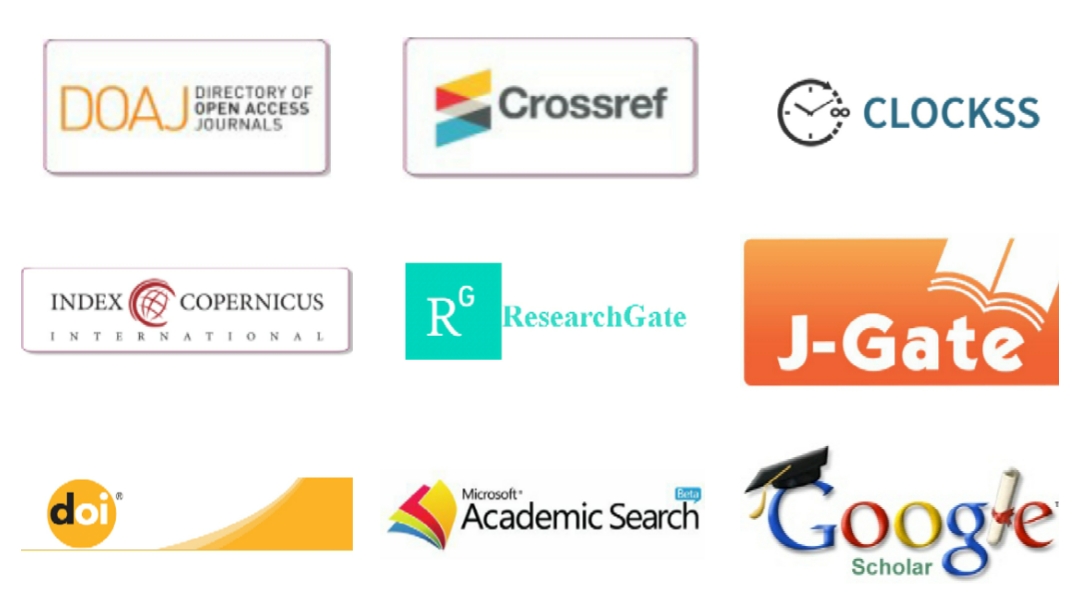External Services and their Integration as a Requirement in Developing a Mobile Framework to Support Farming as a Business via Benchmarking: The Case of NM-AIST
DOI:
https://doi.org/10.14738/tmlai.85.8864Keywords:
Agricultural and rural development (ARD), farming as a business via benchmarking (FAABB), m-apps frameworks.Abstract
Research on agricultural and rural development (ARD) systems in general, and farming as a business (FAAB) in particular, face the limitation of availability of credible and reliable benchmarking data, both for on-farm support for farm management decision making and off-farm support for research, investment and policy decision making. One of the main part of this limitation is to obtain reliable benchmarking data for decision making, both for current conditions and under scenarios of changed bio-physical and socio-economic conditions. This paper presents a framework for mobile application development to support farming as a business via benchmarking (FAABB). This is done with a model that distinguishes between internal and external sources of data and between codified and computed information. Also, the paper demonstrates and emphasizes how integration should be considered as a requirement when developing a typical mobile application for ARD. The paper ends with a description of an ongoing research project at Nelson Mandela African Institution of Technology (NM-AIST) in Tanzania that aims to develop a new framework to facilitate development of mobile applications for FAABB
References
(2) F. Simba and Zaipuna Yonah, “Ict As a Tool for Improving Information Flow Among Livestock,” Int. J. Comput. Sci. Inf. Secur., vol. 12, no. 8, pp. 118–128, 2014, [Online]. Available: http://sites.google.com/site/ijcsis/.
(3) K. S. Mcnamara, “Mobile Applications in Agriculture and Rural Development,” Agriculture, no. December, pp. 1–13, 2009.
(4) D. Kahan, Farm management extension guide: Farm business analysis using benchmarking. 2010.
(5) S. Briard and C. Carter, “Communities of practice and communities of interest: definitions and evaluation considerations Communities of Practice and Interest,” no. November, 2013, [Online]. Available: www.excellencepourenfantsados.ca.
(6) J. J. Kyaruzi, Z. O. Yonah, and H. S. Swai, “Review of agricultural and rural development system models and frameworks to support farming as a business via benchmarking: The case of Tanzania,” Int. J. Comput. Digit. Syst., vol. 8, no. 6, pp. 575–588, 2019, doi: 10.12785/ijcds/080605.
(7) G. Salokhe, V. Pesce, M. Grylle, and E. Mikkola, “Sharing agricultural events information: When and where is that workshop?,” Agric. Inf. Worldw., vol. 1, no. 3, pp. 659–667, 2008.
(8) S. Mpandeli and P. Maponya, “Constraints and Challenges Facing the Small Scale Farmers in Limpopo Province, South Africa,” J. Agric. Sci., vol. 6, no. 4, p. 135, 2014, doi: 10.5539/jas.v6n4p135.
(9) M. Franzago, H. Muccini, and I. Malavolta, “Towards a collaborative framework for the design and development of data-intensive mobile applications,” 1st Int. Conf. Mob. Softw. Eng. Syst. MOBILESoft 2014 - Proc., pp. 58–61, 2014, doi: 10.1145/2593902.2593917.
(10) O. DOSPINESCU and M. PERCA, “Web Services in Mobile Applications,” Inform. Econ., vol. 17, no. 2/2013, pp. 17–26, 2013, doi: 10.12948/issn14531305/17.2.2013.02.
(11) R. N. Sansour, N. Kafri, and M. N. Sabha, “A survey on mobile multimedia application development frameworks,” Int. Conf. Multimed. Comput. Syst. -Proceedings, no. July 2013, pp. 967–972, 2014, doi: 10.1109/ICMCS.2014.6911207.
(12) J. Kyaruzi, Z. Yonah, and H. Swai, “Review of agricultural and rural development system models and frameworks to support farming as a business via benchmarking: The case of Tanzania,” Int. J. Comput. Digit. Syst., vol. 8, no. 6, 2019, doi: 10.12785/ijcds/080605.
(13) D. E. Beaudette and A. T. O’Geen, “Soil-Web: An online soil survey for California, Arizona, and Nevada,” Comput. Geosci., vol. 35, no. 10, pp. 2119–2128, 2009, doi: 10.1016/j.cageo.2008.10.016.
(14) F. Ewert, “Advances in crop modelling for a sustainable agriculture,” Adv. Crop Model. a Sustain. Agric., 2019, doi: 10.1201/9780429266591.
(15) M. Donatelli, R. D. Magarey, S. Bregaglio, L. Willocquet, J. P. M. Whish, and S. Savary, “Modelling the impacts of pests and diseases on agricultural systems,” Agric. Syst.,
vol. 155, pp. 213–224, 2017, doi: 10.1016/j.agsy.2017.01.019.
(16) P. Offermann, O. Levina, M. Schönherr, and U. Bub, “Outline of a design science research process,” Proc. 4th Int. Conf. Des. Sci. Res. Inf. Syst. Technol. DESRIST ’09, no.
January, 2009, doi: 10.1145/1555619.1555629.
(17) M. Schönhart, E. Schmid, and U. A. Schneider, “CropRota – A Model to Generate Optimal Crop Rotations from Observed Land Use,” Diskuss. DP-45-2009 Inst. fuer Nachhalt. Wirtschaftsentwicklung, pp. 1–29, 2009.
(18) G. Martin, “A conceptual framework to support adaptation of farming systems - Development and application with Forage Rummy,” Agric. Syst., vol. 132, no. January 2014, pp. 52–61, 2015, doi: 10.1016/j.agsy.2014.08.013.
(19) A. Fermont and T. Benson, “Estimating yield of food crops grown by smallholder farmers: A Review in the Uganda Context,” IFPRI Discuss. Pap. 01097, no. June, pp. 1–57, 2011.
(20) T. Chusho, “APPLICABILITY OF DOMAIN-SPECIFIC APPLICATION FRAMEWORK FOR END-USER DEVELOPMENT,” pp. 27–34, 2016.
(21) W. E. Forum, N. Vision, and D. Consulting, “Building Partnerships for Sustainable Agriculture and Food Security A Guide to Country-Led Action Contents Preface,” no. January, 2016.
(22) J. J. Kyaruzi, Z. O. Yonah, and H. S. Swai, “Mobile application development framework to support farming as a business via benchmarking: the case of Tanzania,” IInternational J. Adv. Comput. Res. Vol 9(45), vol. 9, no. 45, pp. 365–378, 2019, doi: 10.12785/ijcds/080605.
(23) K. Peffers, T. Tuunanen, and C. Gengler, “The design science research process: a model for producing and presenting information systems research,” J. Manag. Inf. Syst., no. May 2014, pp. 83–106, 2006.
(24) R. Baskerville, J. Pries-Heje, and J. Venable, “Soft design science methodology,” Proc. 4th Int. Conf. Des. Sci. Res. Inf. Syst. Technol. DESRIST ’09, 2009, doi: 10.1145/1555619.1555631.
(25) A. R. Hevner, S. T. March, J. Park, and S. Ram, “Design science in information systems research,” MIS Q. Manag. Inf. Syst., vol. 28, no. 1, pp. 75–105, 2004, doi: 10.2307/25148625.
(26) C. Sanga, M. Mlozi, R. Haug, and S. Tumbo, “Mobile learning bridging the gap in agricultural extension service delivery : Experiences from Sokoine University of Agriculture , Tanzania Camilius Sanga and Malongo Mlozi Sokoine University of Agriculture , Tanzania Ruth Haug Norwegian University of Lif,” Int. J. Educ. Dev. using Inf. Commun. Technol. (IJEDICT), vol. 12, no. 3, pp. 108–127, 2016.






